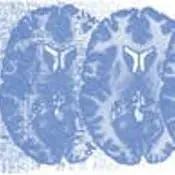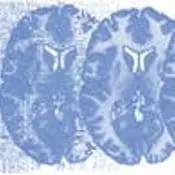Coursera - Neuroscience and Neuroimaging Specialization by Johns Hopkins University
Video: .mp4 (1280x720) | Audio: AAC, 44100 kHz, 2ch | Size: 4.78 Gb
Genre: eLearning Video | Duration: 21h 8m | Language: English
Video: .mp4 (1280x720) | Audio: AAC, 44100 kHz, 2ch | Size: 4.78 Gb
Genre: eLearning Video | Duration: 21h 8m | Language: English
In this class you’ll be learning how to style a presentation for success.
Familiarize yourself with fundamental concepts in neuroscience, like Functional Magnetic Resonance Imaging (fMRI), neurohacking (in R), and neuroimaging.
This specialization combines the strength of 4 different neuroscience courses into a cohesive learning experience. Taught by Johns Hopkins University, it begins with fundamental neuroscience concepts for neuroimaging. Neuroimaging methods are used with increasing frequency in clinical practice and basic research. Starting with the neuroanatomy of the brain, it then moves into principles of neuroimaging, including experimental design in neuroimaging, functional connectivity MRI, diffusion tensor imaging and spectroscopy imaging.
The specialization then continues with two courses that focus on Functional Magnetic Resonance Imaging, one of the most widely used techniques for investigating the living, functioning human brain as people perform tasks and experience mental states, and a convergence point for multidisciplinary work.
To conclude, the specialization moves into implementation of neurohacking using the R programming language, with the associated packages to perform data manipulation, processing, and analysis of neuroimaging data, using publicly available structural MRI.
Fundamental Neuroscience for Neuroimaging
Neuroimaging methods are used with increasing frequency in clinical practice and basic research. Designed for students and professionals, this course will introduce the basic principles of neuroimaging methods as applied to human subjects research and introduce the neuroscience concepts and terminology necessary for a basic understanding of neuroimaging applications. Topics include the history of neuroimaging, an introduction to neuroimaging physics and image formation, as well as an overview of different neuroimaging applications, including functional MRI, diffusion tensor imaging, magnetic resonance spectroscopy, perfusion imaging, and positron emission tomography imaging. Each will be reviewed in the context of their specific methods, source of signal, goals, and limitations. The course will also introduce basic neuroscience concepts necessary to understand the implementation of neuroimaging methods, including structural and functional human neuroanatomy, cognitive domains, and experimental design.
Principles of fMRI 1
Functional Magnetic Resonance Imaging (fMRI) is the most widely used technique for investigating the living, functioning human brain as people perform tasks and experience mental states. It is a convergence point for multidisciplinary work from many disciplines. Psychologists, statisticians, physicists, computer scientists, neuroscientists, medical researchers, behavioral scientists, engineers, public health researchers, biologists, and others are coming together to advance our understanding of the human mind and brain. This course covers the design, acquisition, and analysis of Functional Magnetic Resonance Imaging (fMRI) data, including psychological inference, MR Physics, K Space, experimental design, pre-processing of fMRI data, as well as Generalized Linear Models (GLM’s).
Principles of fMRI 2
Functional Magnetic Resonance Imaging (fMRI) is the most widely used technique for investigating the living, functioning human brain as people perform tasks and experience mental states. It is a convergence point for multidisciplinary work from many disciplines. Psychologists, statisticians, physicists, computer scientists, neuroscientists, medical researchers, behavioral scientists, engineers, public health researchers, biologists, and others are coming together to advance our understanding of the human mind and brain. This course covers the analysis of Functional Magnetic Resonance Imaging (fMRI) data. It is a continuation of the course “Principles of fMRI, Part 1”.
Introduction to Neurohacking In R
Neurohacking describes how to use the R programming language (https://cran.r-project.org/) and its associated package to perform manipulation, processing, and analysis of neuroimaging data. We focus on publicly-available structural magnetic resonance imaging (MRI). We discuss concepts such as inhomogeneity correction, image registration, and image visualization.
By the end of this course, you will be able to:
Read/write images of the brain in the NIfTI (Neuroimaging Informatics Technology Initiative) format
Visualize and explore these images
Perform inhomogeneity correction, brain extraction, and image registration (within a subject and to a template).



